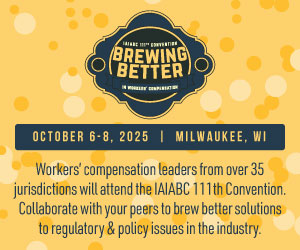Industry Insights
July 1, 2016
Stoddard: Oh, I Made a Mistake! Petitions to Set Aside
- State: California
- - Popular with: Vendor
- - 5 shares
I recently attended the Workers’ Compensation Section 2016 Spring Conference at the State Bar of California. One speaker, the Honorable Judge Cliff Lee, presented “Oops: Mistakes, Errors and Petitions to Set Aside.” His insights are well worth sharing.

Randall Stoddard
As careful as we are, some mistakes are bound to happen. The mistake may be clerical. Other times, it may be more egregious. In any case, it is good to know the proper procedure for correcting errors. It is important to understand how to properly petition to set aside an award, order, etc., and how to lay an evidentiary foundation supporting such a petition.
Setting aside an order, award, etc., is difficult. For one thing, a compromise and release agreement is a contract. Once executed, it becomes legally binding on the parties. (Russell Light v. Summit Drilling and Productions Co., and U.S. Fidelity and Guarantee Co.) (1979) (Appeals Board En Banc) 44 CCC 1083. Stipulations entered into by the parties are also legally binding on the parties (Huston v. WCAB) (1979) 44 CCC 798. Written agreements of the parties that are memorialized in the minutes of hearing also constitute formal agreements and are thus enforceable (Huston, above). These agreements are to be respected. If not, there would be little incentive to enter into settlements and resolve cases. The law favors finality. Attorneys are expected to use due diligence and avoid rescission whenever possible.
Some of the more common mistakes and reasons for requesting rescission include:
- The C&R contains the wrong amount of permanent disability advances to be deducted from the lump sum.
- Stipulation contains wrong earnings information and/or indemnity rate for temporary disability or PD.
- Settlement documents do not list all case numbers, dates of injury and/or body parts.
- Stipulations do not list start date of payment of PD.
- Dollar amount for percentage of PD is wrong.
- Wrong occupational group number is used to calculate PD.
- Medical report or witness is not listed on pre-trial conference statement.
- Civil case or claim was or was not intended to be included in the settlement.
- Attorney’s fee requested inaccurate.
- Balance listed as owing on C&R does not equal the lump sum less deductions.
- Settlement was or was not supposed to include retraining voucher.
- Injured worker has changed his/her mind; does not want settlement.
- Injured worker dies and carrier wants to have the recently issued order approving C&R rescinded.
- Settlement documents do not identify who is responsible for unpaid medical expenses.
- No provision was made for division of attorney's fee between the current and prior attorneys.
- EDD paid when TD was paid and there is no provision addressing it.
- Case caption on the order or award was correct, but case number was wrong.
- Case number on Order or Award was correct, but case caption was wrong.
Five-Year Rule
Labor Code sections 5803 and 5804, read together, give the Workers' Compensation Appeals Board jurisdiction to review, terminate, increase, diminish, rescind, alter or amend any orders, awards or decisions, for good cause, within five years from the date of injury, after notice to the parties and the opportunity to be heard.
If it is more than five years from the date of injury, the WCAB has jurisdiction only if a petition to set aside has been filed within the five-year period. If timely, WCAB jurisdiction can be extended beyond five years from the date of injury, until a final order has issued resolving the petition.
Therefore, your first question is always: Are you within the five-year period? And your second question should be: If it is close to five years post-injury, do I need to file a petition to set aside to maintain jurisdiction? Generally, the answer is yes.
Correction of Errors — CCR 10858
As long as it is within five years from the date of injury, and before a petition for reconsideration is filed, California Code of Regulations 10858 permits a judge to correct a "decision" for clerical, mathematical or procedural errors and to amend the decision for good cause. Labor Code §5313 refers to “decisions” broadly, to include "findings, decision, order or award." (also see CCR 10348).
Note that CCR §10858 refers to the period “before a petition for reconsideration is filed …” This is because once a timely petition for reconsideration has been filed, the judge's options are significantly reduced in CCR 10859.
Power to Undo Decision, Finding, Order or Award — CCR 10859
Within 15 days following the filing of a timely petition for reconsideration, the judge can amend, modify or rescind the order, decision or award. After 15 days has elapsed, the judge cannot take any action until the Appeals Board has denied or dismissed the petition for reconsideration or issued a decision after reconsideration.
'Mistakes' vs. Lack of Due Diligence
Negligence of a party is usually not good cause to set aside an order approving C&R. (Smith v. WCAB) (1985) 50 Cal. Comp. Cases 311. It is a unilateral mistake. A mutual mistake may constitute good cause. A petition to set aside an order approving compromise and release is, in effect, a petition to reopen. It requires a showing of good cause. It is not uncommon that one party alleges "mutual mistake," while the other party asserts the mistake was unilateral. This is ultimately decided by the trier of fact.
Mutual Mistake
A mutual mistake of fact may exist if there is legitimate confusion over who will pay disputed medical legal costs. (Smith, above), as well as if there is legitimate confusion over who will pay outstanding liens. (Gooch v. WCAB) (1977) 42 CCC 521 (writ denied). In one case, both parties thought that private health insurance would pick up the cost of the applicant’s future medical treatment. The C&R was rescinded when it was learned the health insurer would not provide coverage. (City of Beverly Hills v. WCAB) (Dowdle) (1997) 62 CCC 1691 (writ denied).
In another case, the WCAB ruled that a misunderstanding about whether Medicare would cover the applicant's future medical care constituted good cause to set aside the C&R. (Santa Maria Bonita School District v. WCAB) (Recinos) (2002) 67 CCC 848 (writ denied).
The most common situation leading to a petition to set aside a C&R is a dispute over the amount of PD advances credited against the settlement. One party usually argues the amount in the C&R did not contemplate deduction of PD advances or that it inaccurately reflects the amount of actual permanent disability advances. Whether a mutual mistake has been made in such situations depends on the facts of the case, but case law reflects that the WCAB is reluctant to set aside a C&R on these grounds. (World Mark Resorts v. WCAB) (Ramsey) (2005) 70 CCC 1616 (writ denied).
How might the problem be avoided? Write on the C&R that the amount of credit for PDAs is “subject to proof.”
Fraud
A C&R may be set aside on the grounds of fraud. Intrinsic fraud is enough to set aside a C&R if the petition to set aside is filed within five years from the date of injury. (Johnson v. WCAB) (1970) 35 CCC 362, 369. Intrinsic fraud is a deception that relates to the original action and includes perjury. (Home Insurance Co. v. Zürich Insurance Co. (2002) 96 Cal.App. 4th 17, 26).
In one case, the WCAB set aside a C&R for fraud when a deputy sheriff resolved his claims by C&R. After settlement, the employer learned the applicant had conceded to the fact that he had been working during the period he claimed TD. The workers' compensation judge found applicant made fraudulent statements at deposition and ordered the C&R be set aside, and applicant “take nothing.” The appeals court upheld the decision, but also noted that the WCJ’s order that the applicant take nothing was insufficient, and awarded restitution. (Plass v. WCAB) (1997) 62 CCC 705 (writ denied).
Conclusion
Mistakes may happen. So do perjury and fraud. Numerous such facts could constitute good cause to set aside an order, award or finding. Such petitions are often preferable to a petition for reconsideration because it affords you an opportunity to conduct a hearing and build a record so the judge can find good cause. If the judge fails to find such good cause, you still have the statutory period for filing for reconsideration.
Good luck correcting those mistakes!
Randall P. Stoddard is an associate attorney in Bradford & Barthel’s Oakland office. This column was reprinted with permission from the firm's B&B Blog.
Advertisements
Columns
- Kamin: Subpoenaed Records That Can Help With Internal, Psych Claims 08/27/25
- Peabody: Request for Remote Testimony Can Satisfy WCAB Rules With Due Process at Stake 08/25/25
- Montgomery: New DOL Billing Requirements 08/22/25
- CAAA: State Extends Safety Protections to Domestic Service Workers 08/20/25
- Zachry: A Leader in the Fight Against Opioid Abuse 08/18/25
- Kamin: Asking About Liens Against Compensation 08/15/25
- Snyder: Examine Your Process 08/14/25
- Paduda: California Comp Drivers, Part 2 08/13/25
- CAAA: DWC Fumbles UR Rulemaking 08/12/25
- Paduda: California Comp Drivers, Part 1 08/11/25
- Langham: Bias Is Pernicious 08/08/25
- CAAA: Workers Can't Wait for Heat Protection 08/06/25
- Montgomery: State's Mandatory E-Billing Process Arrives 08/04/25
- CAAA: Audit Exposes Deep Failures at Cal/OSHA 07/30/25
- Paduda: Work Comp Remains the Darling of P&C Industry 07/28/25
- Wroten: The Flip Side of Regulations 07/25/25
- Moore: Were We Right About Comp in 2022? 07/23/25
- Kamin: WCIRB Says Carriers Losing Money Due to Rising Costs 07/21/25
- Paduda: What's Happening in Golden State Work Comp? 07/18/25
- CAAA: Fireworks Warehouse Blast Exposes Flaws in Safety, Oversight, Accountability 07/16/25
Now Trending
- Workers' Compensation News
-
Calif. Assembly
Passes Comp…
Posted on Sep 2, 2025
-
Calif. Amendment
Would Limit Expansion of Heart
Trouble…
Posted on Aug 28, 2025
-
Wash. Report:
Computer System Upgrade Suspended
for Lack of…
Posted on Aug 28, 2025
-
Calif. DWC
Proposes MTUS…
Posted on Aug 26, 2025
-
Calif. Senate
Passes Bill to Extend SCIF
Investment…
Posted on Aug 27, 2025
-
Minn. Report Finds
High Denial Rate for Presumptive
PTSD…
Posted on Aug 29, 2025
-
Pa. Superior Court
Upholds $7.3 Million Jury Verdict
for Worker Struck by…
Posted on Aug 26, 2025
-
Ohio Supreme Court
Reinstates Denial of Worker's
Request for PTD…
Posted on Aug 28, 2025
-
Ntl. NCCI: CMS
Price Changes Not Significant Cost…
Posted on Aug 29, 2025
-
Ky. Court Affirms
Finding That Farm Not Liable for
Endemic Fungal…
Posted on Aug 26, 2025
Jobs
Upcoming Events
Sep 2-4, 2025
San Diego Elevate Workers' Com
We are thrilled to announce that Early Bird registration is OPEN for ELEVATE® 2025! This year's …
Nov 7, 2025
WIMAH 2025 Workers’ Compensati
Join Hawai'i’s premier workers’ comp event for expert insights, top-tier networking, and standout …
Social Media Links
c/o Business Insurance Holdings, Inc.
Greenwich, CT 06836




No Comments
Log in to post a comment